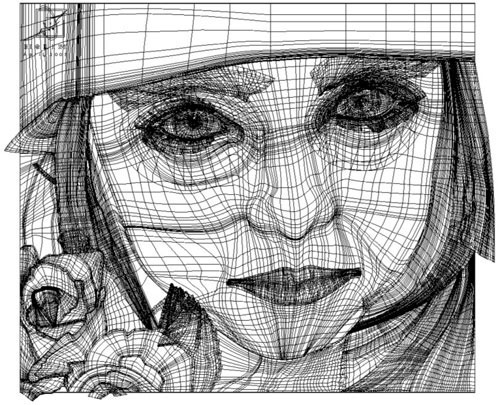Vector Images
Vector images are a collection of individual objects rather than picture elements. A vector image can be composed of points that lines connect or nodes (control points) that Bezier curves connect.
Vector Images: Advantages
A mathematical equation defines each object inside a vector image. This means that vector images are not resolution dependent. Thus, each vector object is scalable and can generally be resized without any image quality loss. As such, vector images are ideal for graphics such as maps and company logos that often require scaling. However, it must be noted that when the sizes of some vector images are reduced too drastically, fine lines may disappear. Too much enlargement can also make drawing mistakes apparent.
Each object may be edited to contain attributes such as outline, color, and fill. Modifying the object’s attributes will not change the basic object. The object’s size can also be transformed or shaped by using and adjusting its control points.
Vector images have no white pixel backgrounds. This means that a vector object can be put above another without blocking out the object underneath.
Vector images typically have small file sizes because one such file contains only the mathematical equations that determine the Bezier curves that define the image. A vector image file does not contain the image itself.
Vector Images: Disadvantages
Vector images, though they are highly defined, are not appropriate for producing realistic photos and images. Vector images have solid color and gradient attributes but they are not conducive to uninterrupted sequences of subtle color tone and shade variations.
There have been improvements to vector drawing software, which enables users to approximate photo-realistic vector objects. Attributes such as transparency can now be adjusted with vector imaging tools. Bitmap textures can now also be applied to vector objects. Shading and blending are also some of the new vector imaging tools’ functions. Still, most vector images look like sharply drawn cartoon images.
Working with Vector Images
Vector images can be made through vector imaging software such as Adobe Illustrator, Corel Draw, Macromedia Freehand, among others. Pictures and graphics can be scanned then converted into vector images with vector conversion software.
Vector images can be converted into bitmap images. Save the vector image first then specify the output bitmap image’s resolution through the rasterizing process. Pixel size, anti-aliasing, and dithering of the output bitmap image are determined through this process. After conversion, it is best to save it in GIF or PNG formats if the resulting bitmap image is going to be used in the Web.
Vector Images Formats
There are various file formats for saving vector images. EPS or Encapsulated PostScript format is the most versatile vector file format and is thus the most commonly used. Another widely used vector image file format is PDF or Portable Document Format, which Adobe developed. One other file format for saving vector images is PICT, which Macintosh developed.


Comments - 2 Responses to “Vector Images”
Sorry but comments are closed at this time.